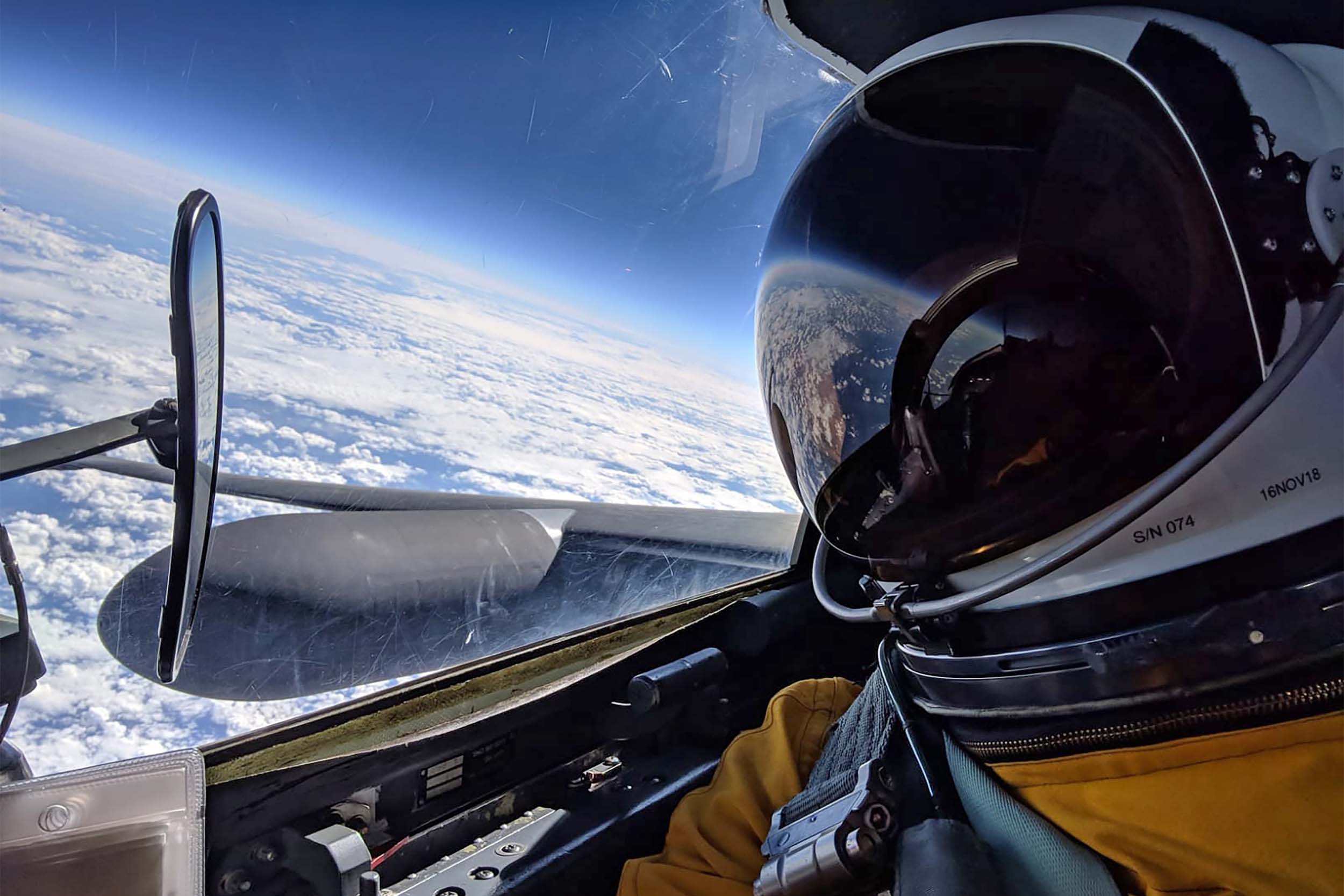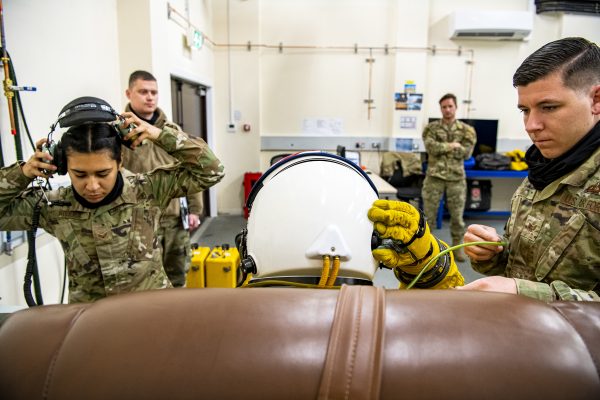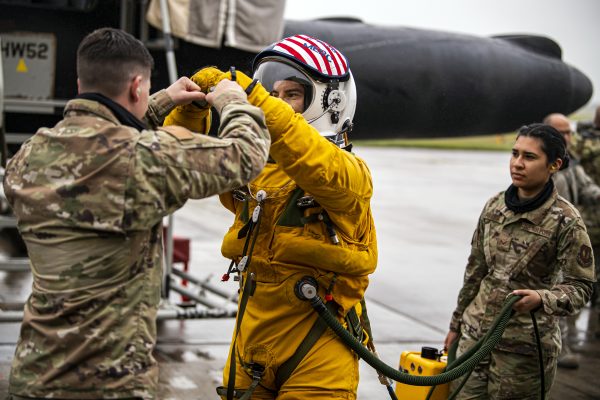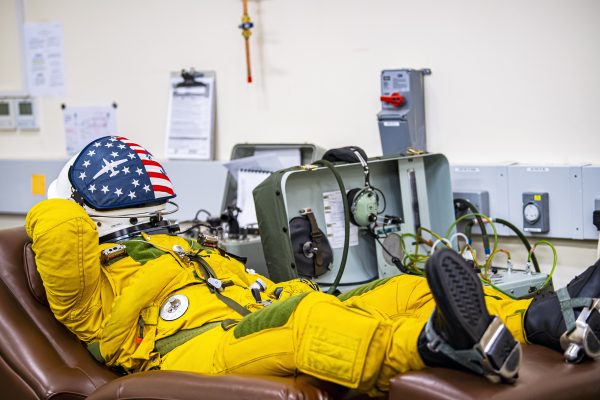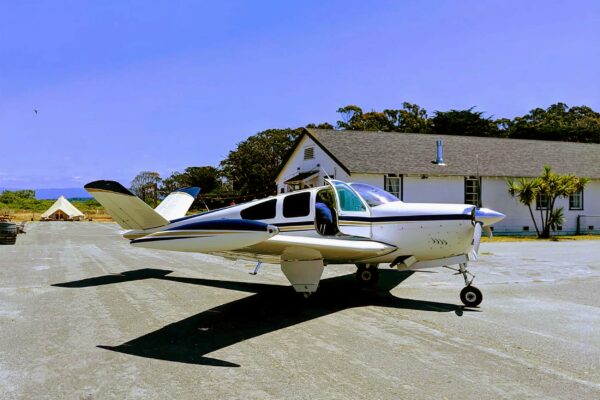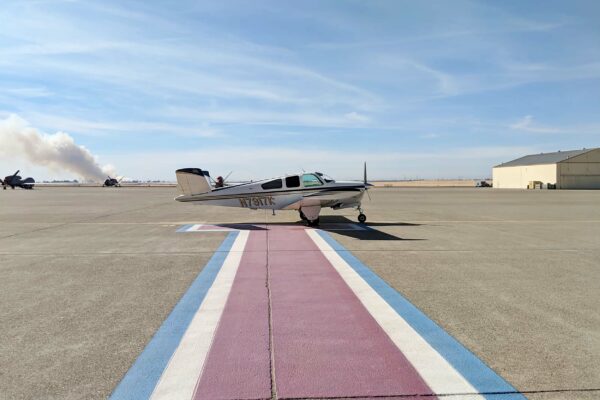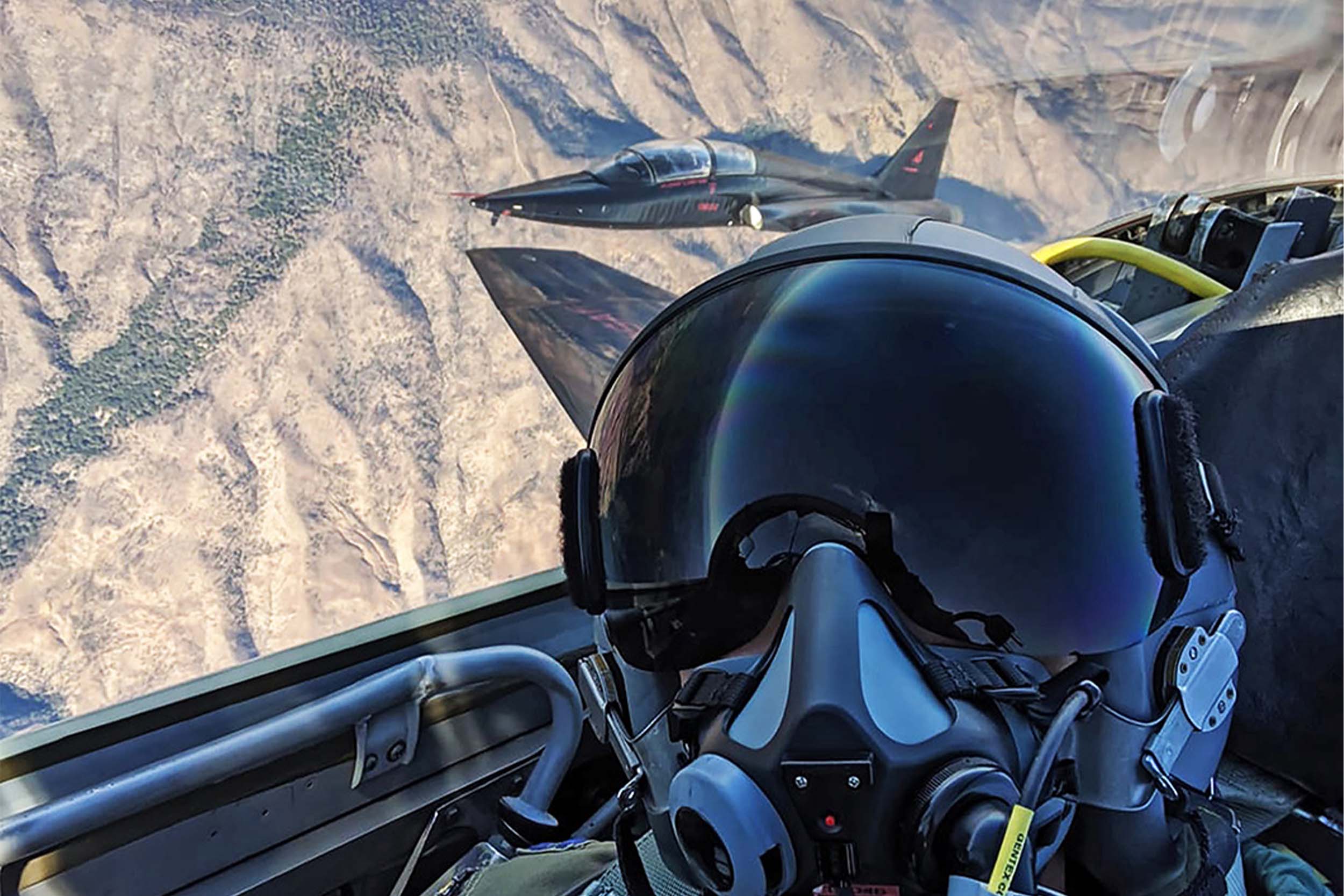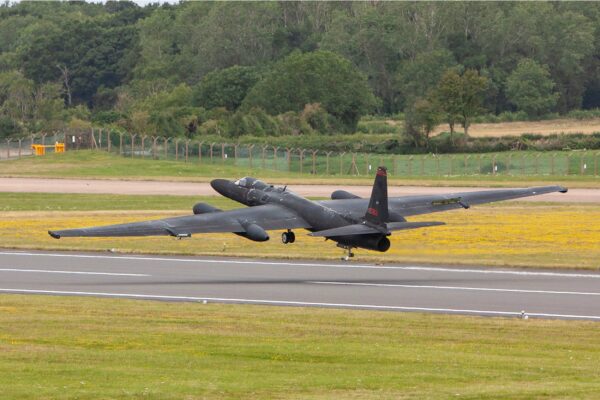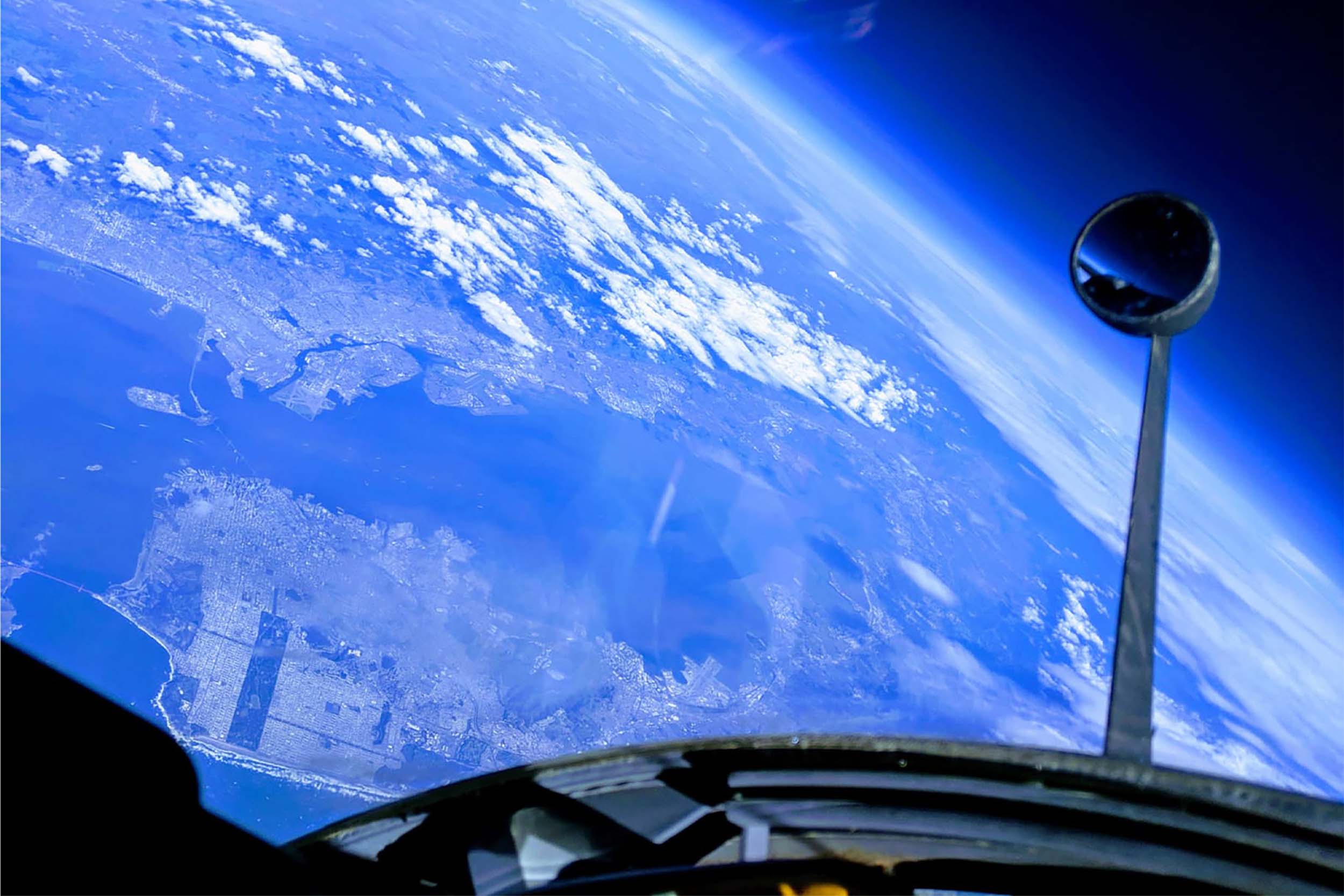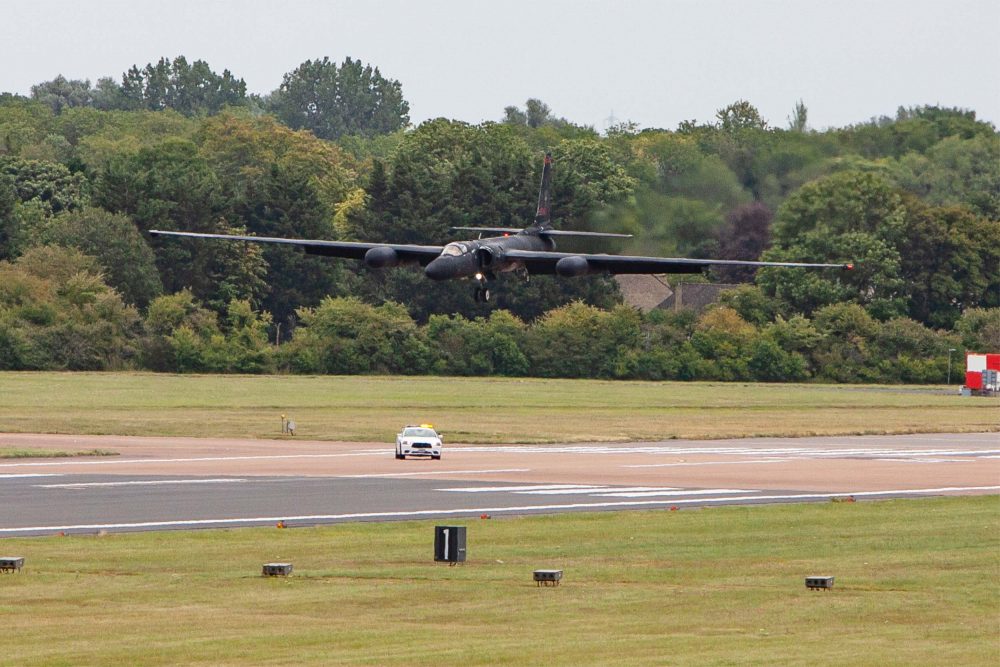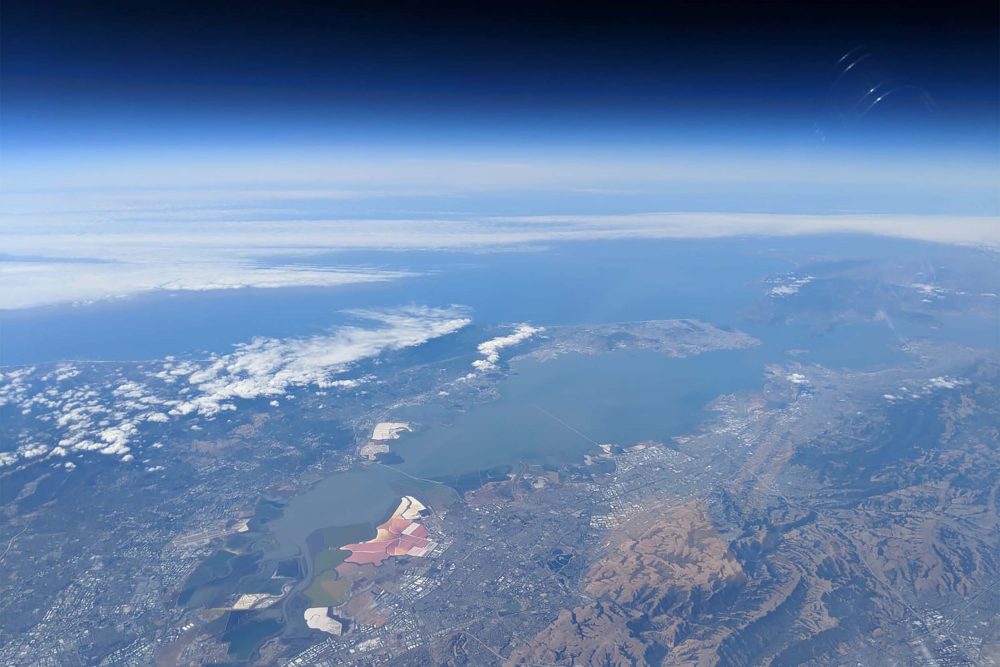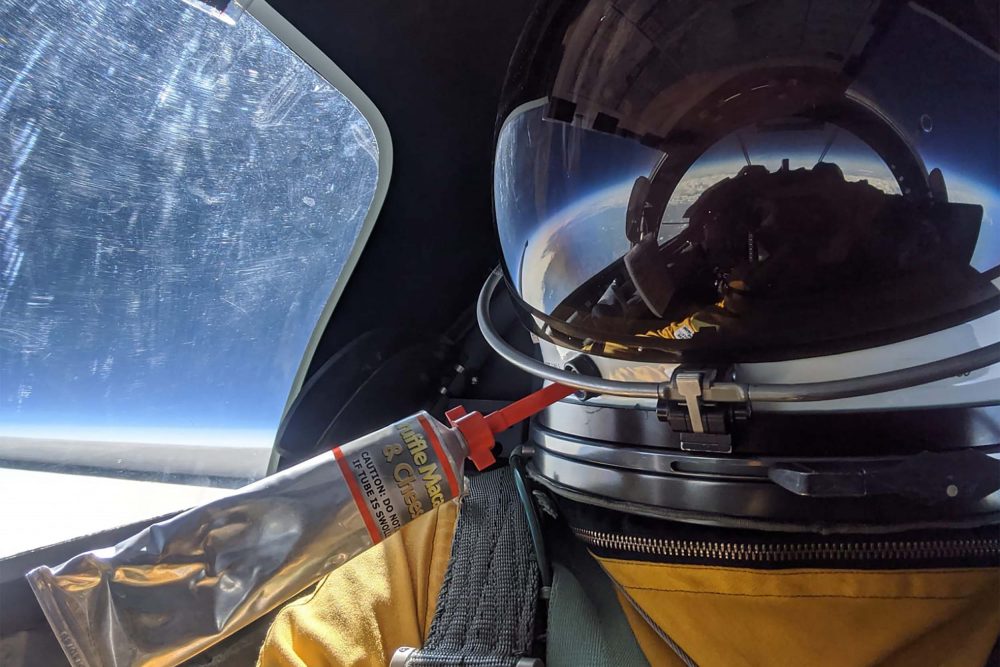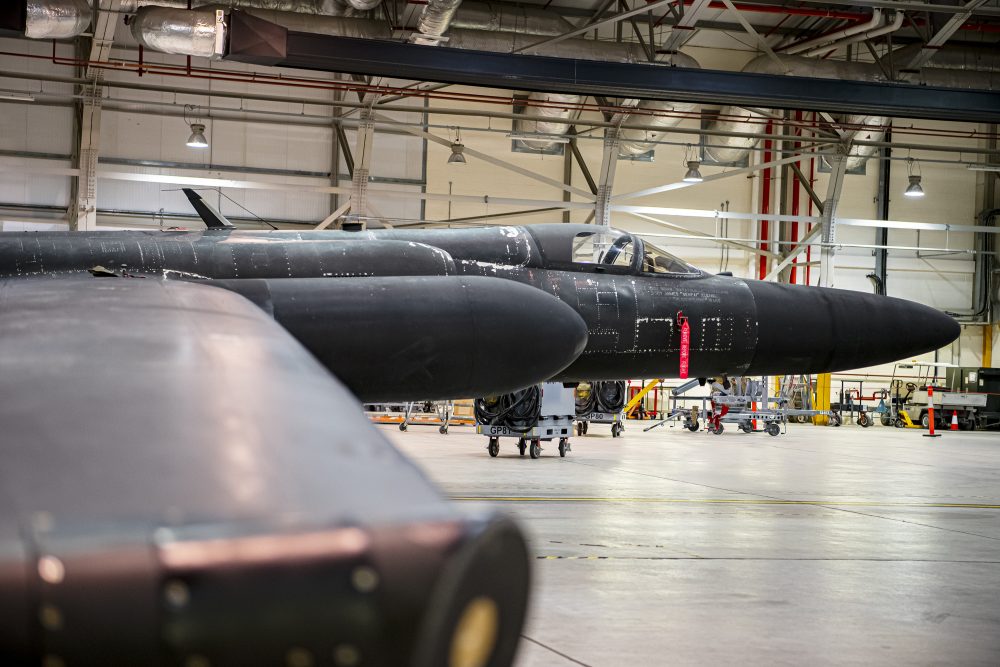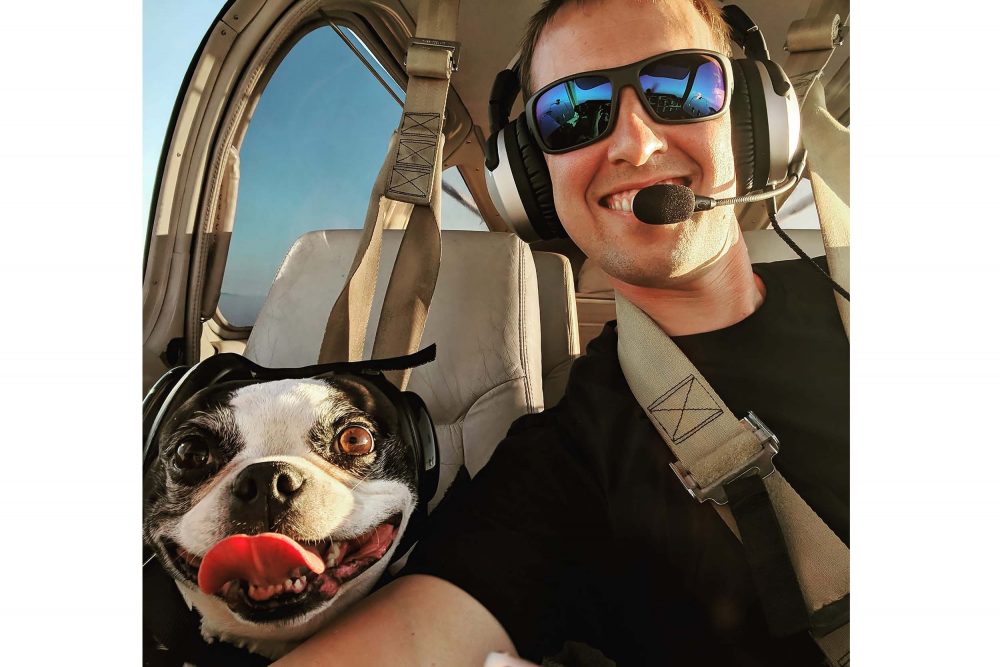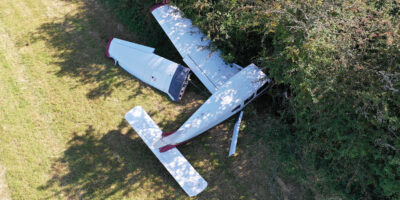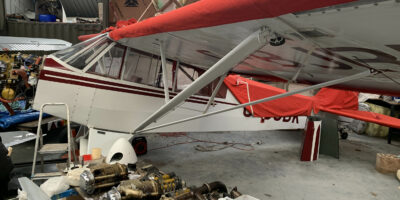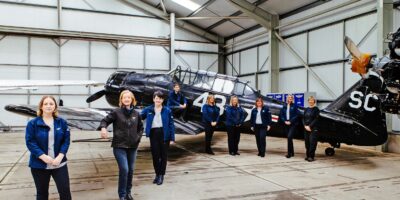Goggs, a former C-17 pilot, explained that the community of people involved in the operation of the jet sold it to him. “It’s a team effort from getting you ‘suited up’ in the jet to landing back after a mission. You might be sitting on your own at 70,000ft but there’s dozens of people involved with every flight that have helped get you there. It’s a big human footprint for a relatively small jet.”
However, to be in the privileged position of sitting in that seat at 70,000ft you must pass an intense and comprehensive two-week interview process. It involves a corporate-style job interview, a 45-minute claustrophobia check in the $250,000 pressure suit, chase car rides to experience the U-2 up close, followed by three flights in the two-seat TU-2S. All the while your every move, word and reaction is being watched by everybody around you.
That first flight was ‘humbling’, said Touchdown, a former C-130 pilot. Cosmo recalled his experience, “It was like being water-boarded and punched in the groin at the same time. The pressure suit is so restricting and you’re pulling the yolk right into your body to land, trying to do things that don’t make sense, like stall the aircraft onto the ground from two to three feet up.” Merc explained the point of these check flights, “You’re not proving you can grease the landing from the first approach, you’re proving that you’re trainable, that you can become a student again.”
Merc was the only one of the group with a prior tailwheel endorsement on his PPL, with others having flown a few taildragger hours either with friends or flying clubs. Crash managed his first ever tailwheel circuits in an RV only a few weeks prior to his interview, but said, “Nobody can do it on that first flight. You can’t land it and it’s a totally different feeling in the pattern. But you’re just focused on your ability to show progression at the right rate.”


